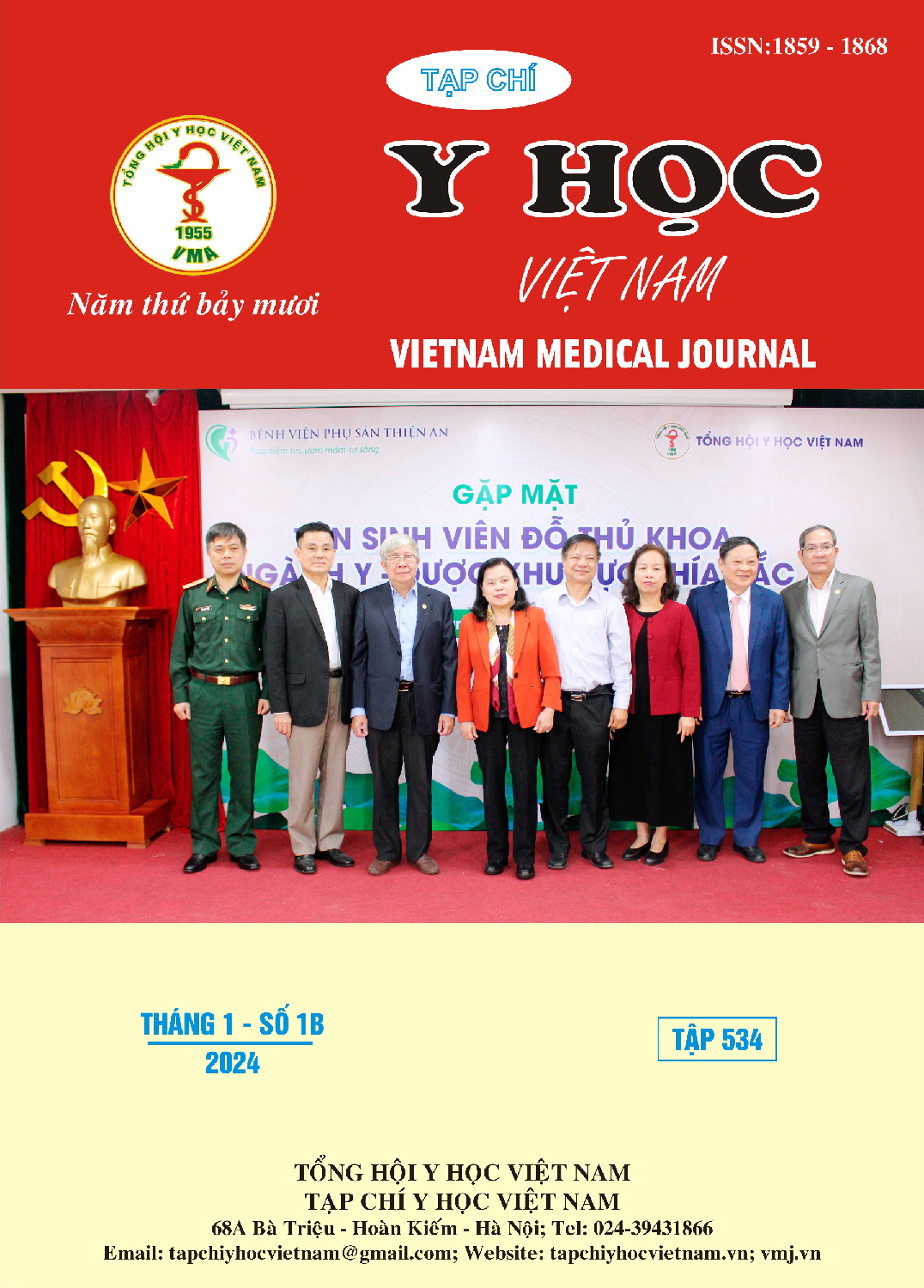THE LEVEL OF IMPROVEMENT IN THE FORWARD-LOOKING HEAD POSITION OF THE NECK EXTENSION MOTION IS ATTRIBUTED TO NGUYEN VAN HUONG'S EXERCISES METHOD ON SUBJECTS THAT STUDENTS HAVE A FORWARD-LOOKING HEAD POSITION
Main Article Content
Abstract
Objective: To investigate the degree of change in the craniovertebral angle (CVA) of the neck extension movement according to Nguyen Van Huong's exercises method on students with a forward-looking head position. Subjects and Method: Randomized controlled trial without a control group. Conducted from December 2022 to May 2023 on 60 healthy students Faculty of Traditional Medicine, University of Medicine and Pharmacy at Ho Chi Minh City. For eight weeks, three days a week, volunteers were split into two exercise groups at random: 15 minutes and 7 minutes. Locate the C7 spinal first, then the point in front of the ear, the shoulder process, and mark it with a sticker. Position the phone 80 cm across the C7 vertebra away from the volunteer and to the left of their heart on a tripod to snap a picture. The picture is put into AutoCAD three times to determine the average CVA. Results: The 15-minute exercise group's post-exercise CVA angle increased by 9.74 degrees relative to before exercise (p < 0.05), proving statistical significance. The 7-minute exercise group's post-exercise CVA rose 7.79 degrees above its pre-exercise value. The CVA results after exercise in both groups increased significantly compared to before exercise (p < 0.05), which was statistically significant. Conclusion: Following exercise in both the 15-minute and 7-minute groups, doing neck stretching exercises by Nguyen Van Huong's exercises method improved forward head posture and raised the CVA.
Article Details
References
2. Kang N. Y., Im S. C., Kim K. Effects of a combination of scapular stabilization and thoracic extension exercises for office workers with forward head posture on the craniovertebral angle, respiration, pain, and disability: A randomized-controlled trial. Turkish journal of physical medicine and rehabilitation. Sep 2021;67(3):291-299.
3. Lee S. M., Lee C. H., O'Sullivan D., Jung J. H., Park J. J. Clinical effectiveness of a Pilates treatment for forward head posture. Journal of physical therapy science. Jul 2016;28(7):2009-13
4. Ramalingam Vinodhkumar, Subramaniam Ambusam. J Scopus IJPHRD Citation Score. Prevalence and associated risk factors of forward head posture among university students. 2019;10(7):775.
5. Cochrane Maria Elizabeth, Tshabalala Muziwakhe Daniel, Hlatswayo Nkateko Climax, et al. The short-term effect of smartphone usage on the upper-back postures of university students. 2019;6(1):1627752.
6. Võ Trọng Tuân, Phạm Huy Hùng. Phương pháp dưỡng sinh. NXB Đại học quốc gia TP.HCM 2021:54,79-80,98 -101
7. Andersen Lars L, Saervoll Charlotte A, Mortensen Ole S, Poulsen Otto M, Hannerz Harald, Zebis Mette K J Pain®. Effectiveness of small daily amounts of progressive resistance training for frequent neck/shoulder pain: randomised controlled trial. 2011;152(2):440-446.
8. Kebaetse M., McClure P., Pratt N. A. Thoracic position effect on shoulder range of motion, strength, and three-dimensional scapular kinematics. Archives of physical medicine and rehabilitation. Aug 1999;80(8):945-50


